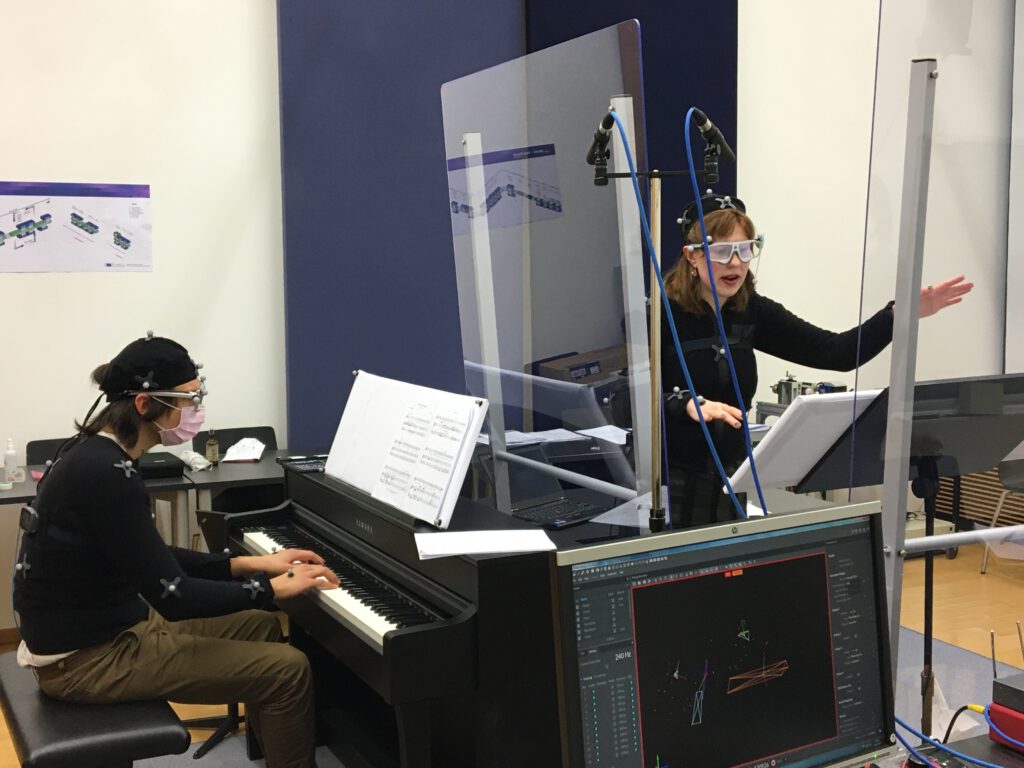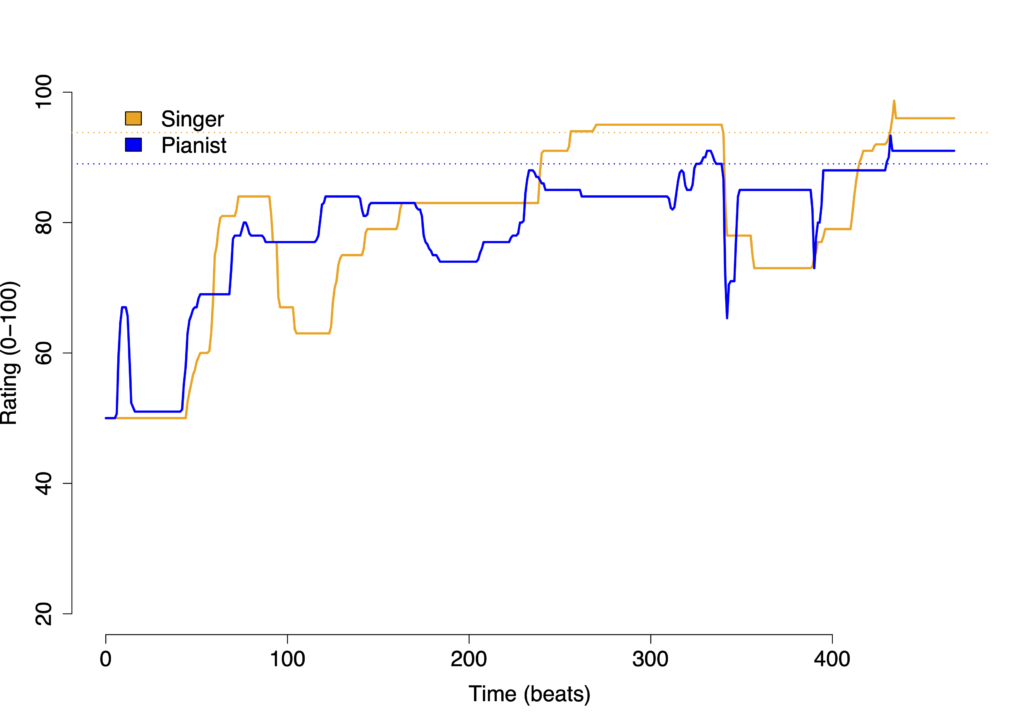Playing music as part of a group can be challenging, but it can also be rewarding when the performance goes well. Ensemble playing can lead to feelings of enjoyment, aesthetic pleasure, and social connection between performers, which we refer to as “musical togetherness”. In this study, we test the hypothesis that ensemble players’ body rhythms support their feelings of togetherness. We also test the hypothesis that experiences of togetherness are cognitively engaging and therefore evoke cognitive effort (which can be indexed through pupil size measurements).
Singer-piano duos participated in the study. They performed two Lieder as we captured their head motion, breathing patterns, and pupil size. Afterwards, they rated how together they felt using a continuous scale while watching and listening to their recorded performance. Our analysis investigates how synchrony in head motion, synchrony in breathing, and pupil size changes relate to musicians’ ratings of togetherness.
Preliminary results from this study were presented at RPPW in June 2023:
Bishop, L., Niemand, A., D’Amario, S. and Goebl, W. (2023) Coordinated head motion predicts cognitive effort and experiences of musical togetherness in singing-piano duos. Paper presented at the 19th Rhythm Perception and Production Workshop, Nottingham, UK.

